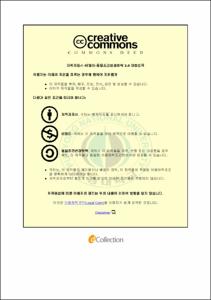한영 번역에 나타난 지시표현의 차이
- Alternative Title
- A Study on the Referential Expressions in Korean-English Translation
- Abstract
- The purpose of this study is to discuss how referential expressions are differently coded in Korean-English translations in terms of topicality, animacy and sociocultural context. In this paper, referential expressions refer to common nouns, proper nouns and pronouns. In the analysis, 257 differently translated referential expressions are found from two parallel corpora, which are Please Look After Mom(2010) and its original Korean text(2008), and Our Twisted Hero(1990) and its original Korean text(1987).
In this study, the number of common nouns, proper nouns and pronouns in the original Korean texts and English translation texts is as follows: 208/63, 18/48, 31/146. This means that Korean has a preference for using common nouns over the others, but English employs pronouns most. That is because pronouns are employed to refer to continuous participants in English, while common nouns are used repeatedly regardless of topicality in Korean.
The reason why Korean and English employ different referential expressions although they have the same contexts can be accounted for in the following way. First, the higher topicality is, the more pronouns are used in English. However, common nouns are repeatedly used irrespective of topicality in Korean. Second, Korean and English differently code referential expressions with regard to animacy. Third, referential expressions are affected by sociocultural contexts. Koreans emphasize on the relationship between people, and regard individual as a member of the society, whereas Westerners consider individual as an unique identity.
- Issued Date
- 2012
- Awarded Date
- 2012. 8
- Type
- Dissertation
- Publisher
- 부경대학교
- Alternative Author(s)
- Kim, Soo-Kyung
- Affiliation
- 부경대학교 교육대학원
- Department
- 교육대학원 영어교육전공
- Advisor
- 김은일
- Table Of Contents
- 영 문 초 록 ....................................................................................... ⅲ
Ⅰ. 서론 ............................................................................................ 1
Ⅱ. 이론적 배경 ............................................................................. 5
2.1. 주제성에 대한 영어와 한국어의 특성 ............................. 5
2.1.1. 영어 ...................................................................................... 5
2.1.2. 한국어 .................................................................................. 6
2.2. 유생성 부호화 ......................................................................... 9
2.3. 동양과 서양의 역사․사회․문화적 특성 ...................... 10
Ⅲ. 지시표현의 변경 유형, 빈도 및 설명 ....................... 13
3.1. 지시표현의 변경 유형 및 빈도 ........................................ 13
3.2. 한국어의 형태별 영어 번역 유형 .................................... 15
3.2.1. 보통명사 ............................................................................ 15
3.2.1.1. 보통명사 > 대명사 ................................................... 16
3.2.1.2. 보통명사 > 고유명사 ............................................... 19
3.2.1.3. 보통명사 > 다른 보통명사 ..................................... 22
3.2.2. 고유명사 ............................................................................ 25
3.2.2.1. 고유명사 > 대명사 ................................................... 25
3.2.2.2. 고유명사 > 다른 고유명사 .................................... 26
3.2.2.3. 고유명사 > 보통명사 .............................................. 28
3.2.3. 대명사 ............................................................................... 29
3.2.3.1. 대명사 > 다른 대명사 ............................................ 30
3.2.3.2. 대명사 > 고유명사 .................................................. 33
3.2.3.3. 대명사 > 보통명사 .................................................. 35
Ⅳ. 결론............................................................................................. 38
참고문헌 ............................................................................................ 43
분석자료 ............................................................................................ 44
- Degree
- Master
- Files in This Item:
-
-
Download
 한영 번역에 나타난 지시표현의 차이.pdf
기타 데이터 / 1.86 MB / Adobe PDF
한영 번역에 나타난 지시표현의 차이.pdf
기타 데이터 / 1.86 MB / Adobe PDF
-
Items in Repository are protected by copyright, with all rights reserved, unless otherwise indicated.